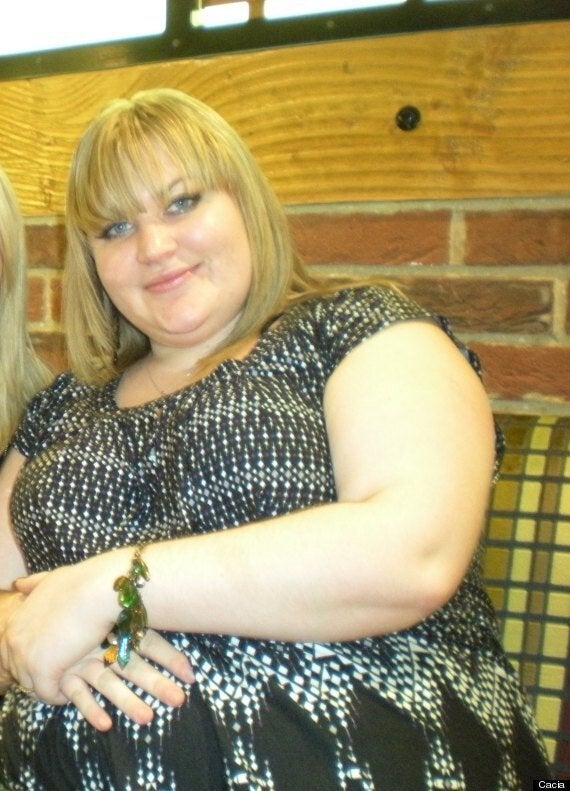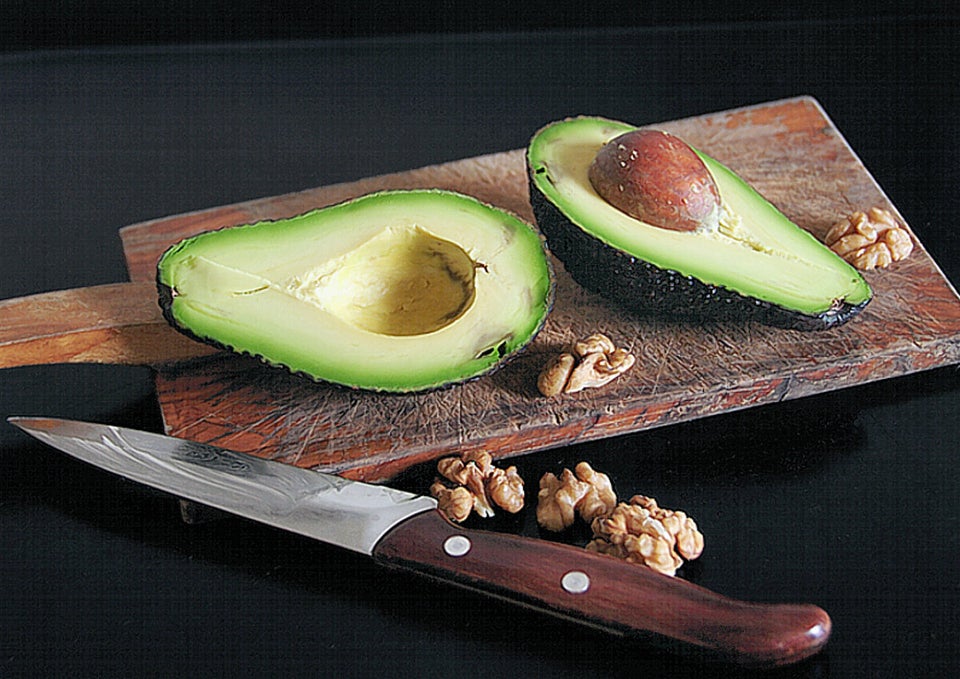If you want rapid weight loss, the Cambridge Diet has been hailed as one of the most effective ways to do so.
But what does it actually involve?
It works on several 'steps' or levels of diet. If you are heavily overweight (they say a BMI of over 25 at least) and have found that diets haven't worked for you in the past, then you will want to start at stage one.
This is called Sole Source, named after the meal-replacement products you'll be eating, and includes around four Cambridge products a day, coupled with 2.5 litres of water.

Price-wise it costs about £44 a week, which they say is cheaper than Weight Watchers.
We wanted to find out if it really worked, and what the challenges and benefits were, so HuffPost UK Lifestyle spoke to slimmer Cacia Griggs who works as a sales and marketing team leader, who managed the feat of going from a size 24 to a size 10 in 18 months.
She said: "I started the diet in July 2011 and as with anyone who is overweight, there were lots of reasons why I wanted to lose the weight. But, I would lose motivation because I wouldn't see the results quickly and I had 8 stone to lose.

Cacia - before the diet
"The final straw was when I saw an article that said if the parents were obese, then the children of the same sex are likely to become obese. I could not imagine my daughter Isabelle, who was three at the time being obese. Something had to change. People in my office had done the diet before and recommended it."

Cacia - how she looks now
Once you sign up, you're assigned a consultant - and this person is quite critical to the success of your plan as they are the ones that keep you on track, and are your support when things seem impossible.
"I found it invaluable," says Cacia, "because when you're having a day when you don't feel so motivated, it helps a lot. There were of course occasions when I had a wobble, but after you've indulged your cravings, the feeling you get afterwards is not good - you feel sluggish and it isn't worth it."
You will be consuming between 440 to 650 calories a day, and this enables you to move the weight quite quickly.
You then move on to other stages which introduce regular foods into your diet.
So what causes the rapid weight loss?
Kerensa Preedy-Houston at Cambridge Weight Plan (CWP) says: "When you start step one, your body goes into ketosis."
The fat stores become a primary energy source and the person then loses weight.
Although replacing a balanced meal with shakes and bars may sound ominous, the meal replacements are stuffed with the vitamins you need to stay healthy - such as boosting your immune system, strong nails and teeth, and energy levels, but for anyone, moving from a diet of regular food to such extreme diet food can be a challenge.

The diet pushes your body into a state of ketosis, but the problem is that some experts are not convinced it is a healthy state for the body to be in.
Blogger Laura Summers, who wrote positively about the diet, said that she did find the bad breath a challenge and that you need to be prepared to give up caffeine.
"However, if you are in it for long term weight management then you can choose a more gentle plan with an allowance of 1,500 calories a day - you can combine the specially-formulated bars, drinks, soups and porridge along with other 'regular' food," she said.
"Although I'm normally suspicious about dramatic weight loss diets, I am impressed that the Cambridge Weight Plan is quite transparent about what some of the health complications might be."
Kerensa Preedy-Houston at Cambridge Weight Plan (CWP) added: "CWP is generally very well tolerated but some customers do experience side effects. For example we have noted cases of gallstones but we should note that people who are overweight or obese may also experience gallstones.
"Gout is another condition that we have seen. This is because when people lose weight the level of uric acid increases and so does the risk of gout."
The NHS says that it does not think the CWP is sustainable in the long term, but that it can help with the initial bulk of losing weight. For a lot of people who are obese, this can be the initial challenge - often the reason why dieting falls by the wayside is because it takes so long for weight loss to make itself evident on an overweight person.
Cacia used to be a size 24 (but did describe herself as probably being a 26), and didn't exercise or control her diet.
She said: "Everything was effort, even just going for a lunchtime walk. I’d be panting and puffing and wish I hadn’t done it. With food, we now have takeaways maybe once a month if that but we used to have maybe two a week.

Another 'before' shot
"Because I didn’t have anything I was bothered about maintaining, there was nothing I wanted to maintain. I didn’t care about what I was eating," she explained.
"At dinner, I'd have all the wrong stuff: chips and chocolate. At work, if there were snacks handed around – I’d be the first one at them. Another thing I did an awful lot is that I would eat something while cooking.
"So by the time dinner was ready, I probably wasn't hungry, but I'd eat it anyway because I'd cooked it."
Exercise is something that is not advised while on step one because the body is taking time to adjust to the reduced calorie intake. CWP advises visiting your GP before embarking on the diet.
"Exercise is something that could be discussed during their appointment, especially if normally inactive," says Kerensa Preedy-Houston.
Story continues below...
So what's the first week like?
Cacia says: "It was quite hard, everyone has different side effects, and for me, getting used to drinking a lot of water was difficult considering I used to drink zero water.
"I craved a lot but once the first week was out of the way, it got easier and I had lost 10 pounds and that was enough motivation to keep going. In the past it has taken me four weeks to lose ten pounds."
Cacia would try and motivate herself with various methods such as buying a dress one size too small that she knew she would soon get into if she kept with the diet.
She started to chew gum when she was baking and, to avoid picking at leftovers, she'd sprinkle pepper over them, as she didn't like the taste of it.

One of the most difficult aspects of the diet however is that because you're replacing all meals with shakes and diet products, it makes eating out and socialising tricky.
"I avoided going to restaurants altogether," she said.
But there is light at the end of the tunnel, specifically step two when you can introduce food into the diet.
"I used a small plate which I found helped a lot. That way, you don't feel the need to fill up the plate."
So what's the conclusion? If we are to go by Cacia's testimony, then the diet is a results-driven godsend for people struggling with obesity, but there is no question that it requires a lot of willpower and you will need the support of people around you.
Especially since we live in a culture of 'oh go on, one won't hurt you' which can apply to everything from doughnuts to an extra pint in the pub.
"There are people who don’t understand, and have never had a weight problem and these are the people who may unknowingly sabotage your diet," she says.
"The first few months were most difficult, and a large part of my job is events so we go out with customers and as a team. I had to avoid them. Once I had done the diet for a few months, I felt in a much stronger place.
"When people notice your weight loss, the support is incredible – it was amazing. Also, I did go on the CWP social media sites and the motivation on there from people keeps you on track and reminds you why you’re doing it."
To contact a consultant at Cambridge Weight Plan, visit the website.
